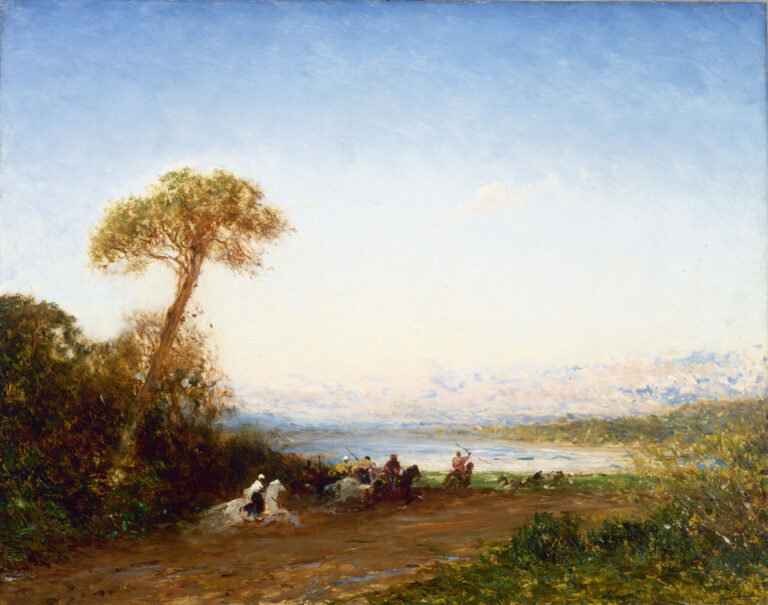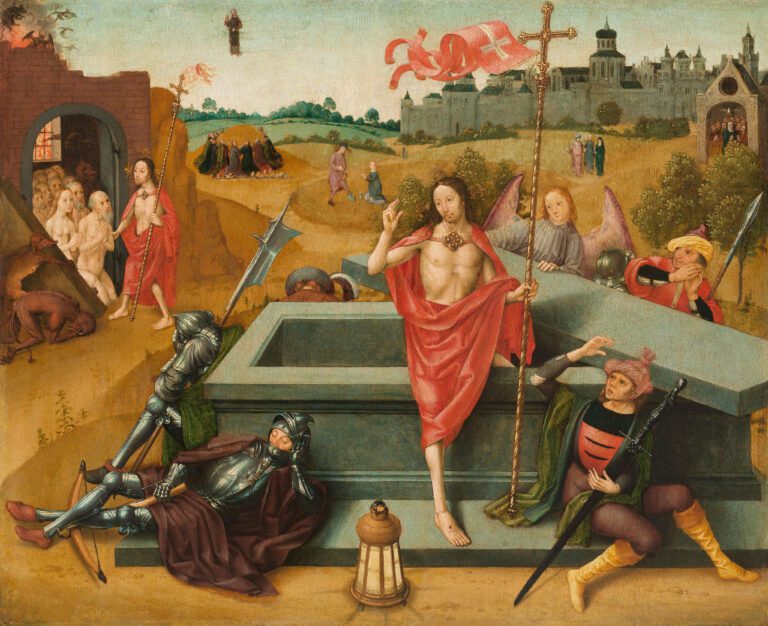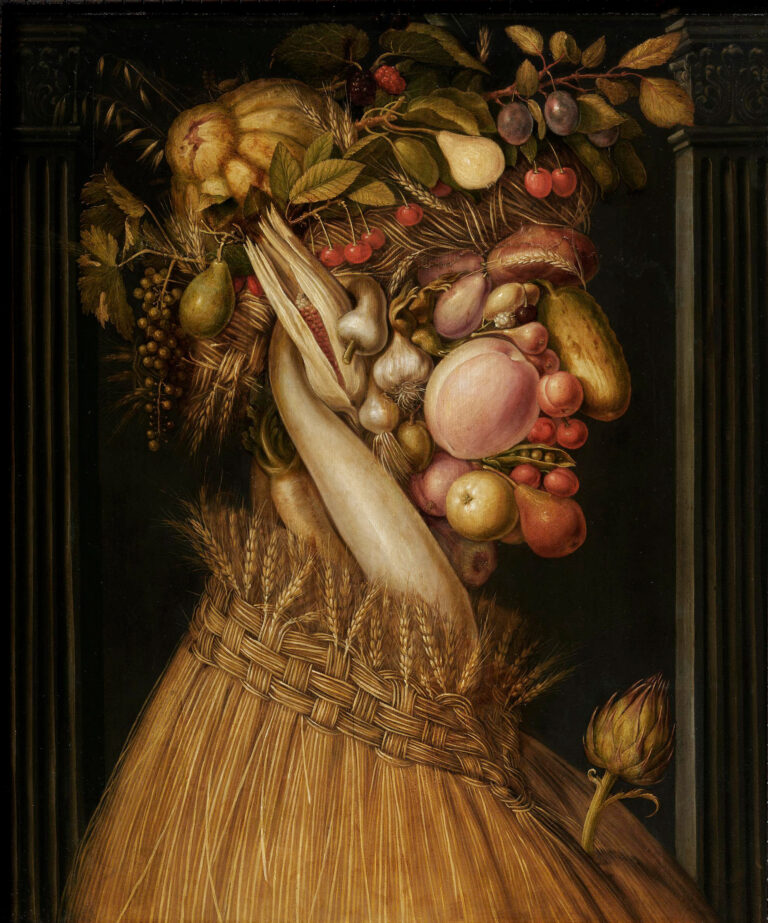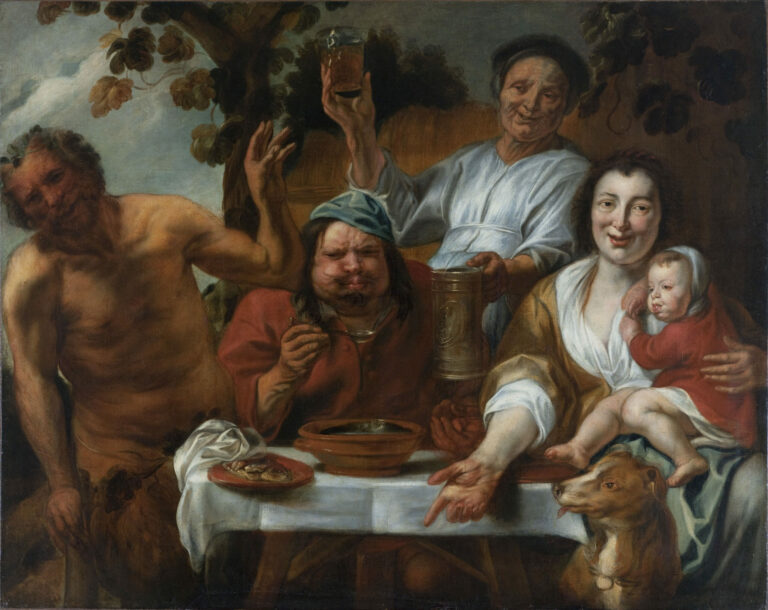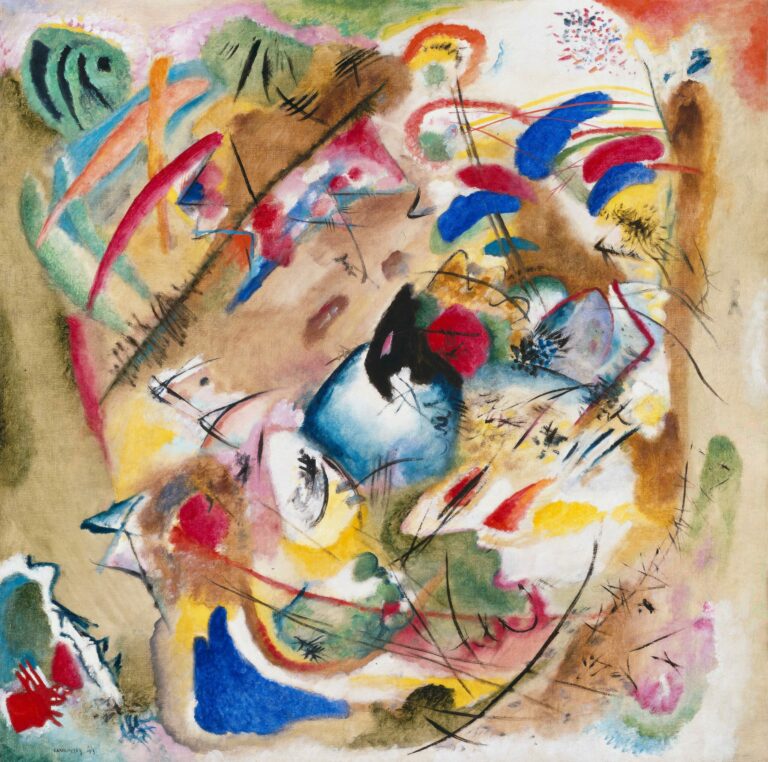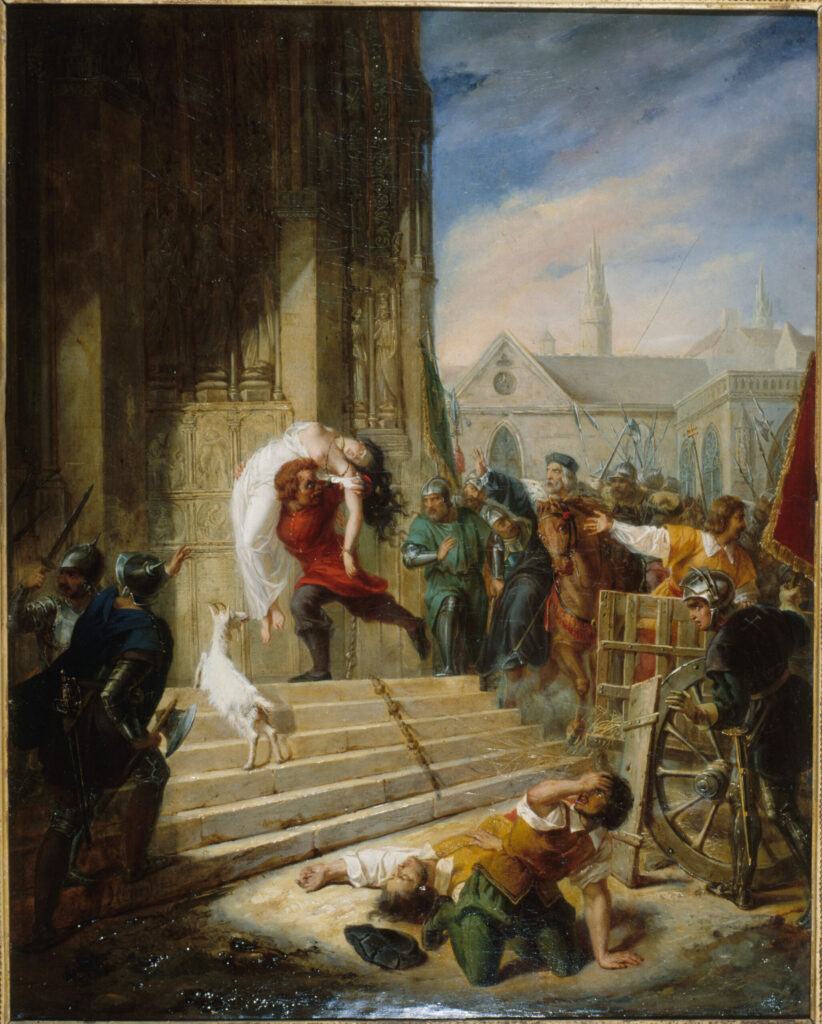
This oil on canvas illustrates one of the most dramatic scenes from Victor Hugo’s “Notre-Dame de Paris”: Quasimodo’s rescue of Esmeralda.
The composition revolves around the cathedral, where this scene of striking theatrical intensity unfolds. In the foreground, Quasimodo, dressed in a scarlet doublet, carries the lifeless body of Esmeralda, whose white dress symbolizes threatened innocence. The diagonal formed by their bodies creates remarkable dramatic tension, emphasized by the Gothic architecture of the cathedral, which punctuates the scene with its imposing vertical lines.
The artist has masterfully orchestrated the confrontation between shadow and light: the darkness of the cathedral contrasts with the luminosity of the Parisian sky. The enigmatic presence of the white goat, Djali, Esmeralda’s faithful companion, adds a touch of symbolism. The crowd of soldiers and onlookers, rendered with meticulous attention to detail, creates a tumultuous background that reinforces the dramatic tension. A fallen figure in yellow and green attire adds a note of violence that underscores the urgency of the situation.
This work illustrates how 19th-century artists appropriated Romantic literature to create compositions where drama, Gothic architecture, and history blend into a striking visual synthesis.
Further information
- Quasimodo Saving Esmeralda from Her Executioners, Eugénie Henry-Latil, 1832
- 81 x 65 cm
- Maison de Victor Hugo – Hauteville House
- https://www.parismuseescollections.paris.fr/fr/maison-de-victor-hugo/oeuvres/quasimodo-sauvant-la-esmeralda-des-mains-de-ses-bourreaux
Eugénie Henry-Latil (1808-1881) was a singular 19th-century artist whose recognition has not reached its deserved extent. Married to Pierre Latil, she sometimes signed her works “Madame Latil” or “Eugénie Latil,” which complicated later recognition of her body of work. This reflects the complex status of women artists in the 19th century, divided between their identity as artists and their social status as wives.

